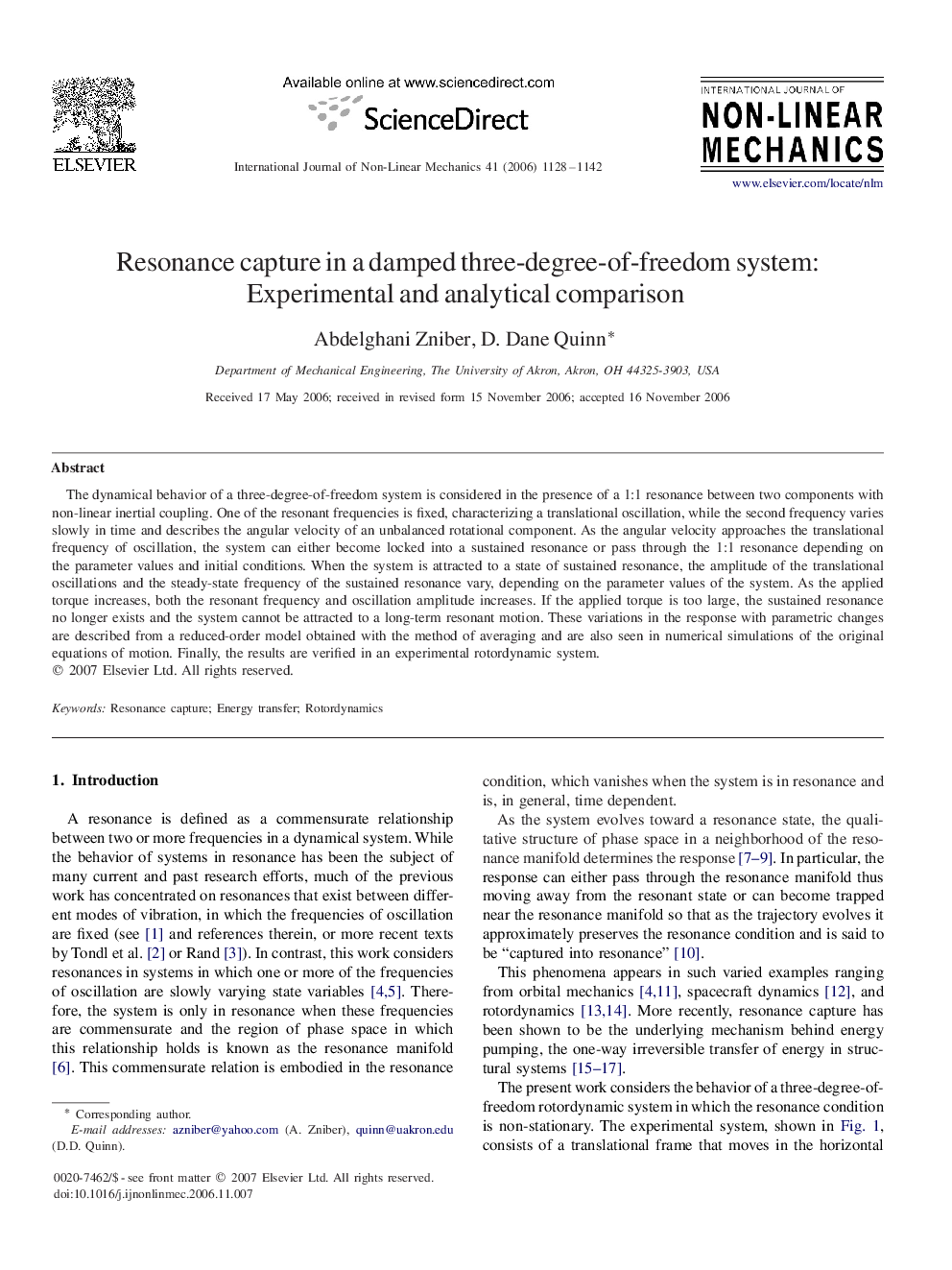| Article ID | Journal | Published Year | Pages | File Type |
|---|---|---|---|---|
| 788462 | International Journal of Non-Linear Mechanics | 2006 | 15 Pages |
The dynamical behavior of a three-degree-of-freedom system is considered in the presence of a 1:1 resonance between two components with non-linear inertial coupling. One of the resonant frequencies is fixed, characterizing a translational oscillation, while the second frequency varies slowly in time and describes the angular velocity of an unbalanced rotational component. As the angular velocity approaches the translational frequency of oscillation, the system can either become locked into a sustained resonance or pass through the 1:1 resonance depending on the parameter values and initial conditions. When the system is attracted to a state of sustained resonance, the amplitude of the translational oscillations and the steady-state frequency of the sustained resonance vary, depending on the parameter values of the system. As the applied torque increases, both the resonant frequency and oscillation amplitude increases. If the applied torque is too large, the sustained resonance no longer exists and the system cannot be attracted to a long-term resonant motion. These variations in the response with parametric changes are described from a reduced-order model obtained with the method of averaging and are also seen in numerical simulations of the original equations of motion. Finally, the results are verified in an experimental rotordynamic system.
